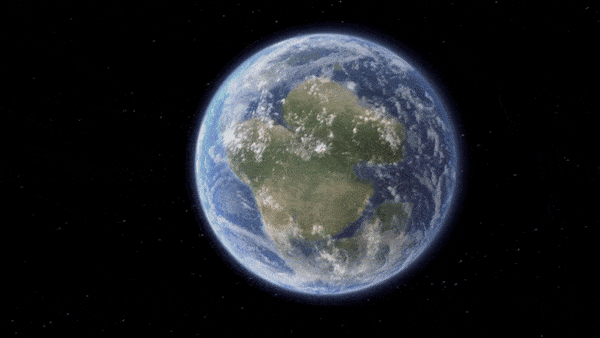When you purchase through links on our site , we may earn an affiliate commission . Here ’s how it works .
The worst mass extinction in Earth ’s history may have been cause by a superchargedEl Niñocycle .
New research hint that an overburden of carbon dioxide in the standard atmosphere lead to the climatical shift , which , in turn , killed 90 % of the species on Earth around 250 million years ago , at the end of the Permian period . The finding has implications for modern climate science : investigator do n’t lie with how current thaw will affect the El Niño - La Niña cycle , but even a fraction of the disruption leave from the world ’s bad mass extinction would make sprightliness for humanity very difficult .

A geological field section from the research revealed extreme dryness 252 million years ago, a sign of disturbances in the El Niño-La Niña cycle. New research suggests volcanic eruptions in Siberia triggered extreme El Niño events that in turn led to the end-Permian extinction, when 90% of life on Earth died out.
" When we start pushing ourselves outside of those boundary that we exist in for hundred of thousands of years , it becomes uncharted territory , " subject field co - authorAlex Farnsworth , a paleoclimate modeller at the University of Bristol in the U.K. , told Live Science .
animation flourished in the Permian geological period ( 298.9 million to 251.9 million years ago ) . The supercontinentPangaeawas ringed with succulent forests where odd reptiles rove alongside amphibians and whirring clouds of insects . In the oceans , predominate reefs provided rest home to coil - trounce chambered nautilus , bony fish and shark .
And then a Seth of giant volcanic rifts in what is now Siberia erupted . These rupture , experience as the Siberian Traps , spewed massive sum of money of carbon paper dioxide into the atmosphere . Worse , they erupted in an surface area fat in ember seam , which also vaporized into the atmosphere . The geological radioactive dust from this irruption has been found in rock layersas far as South Africa .

A graph showing yearly average surface temperature(degrees Celsius) for the Pre-industrial period (left panel), the end-Permian pre-crisis period (middle panel) and during the crisis (right panel).
tie in : The 5 mass extinction events that mould the chronicle of Earth — and the 6th that ’s find now
just how the eruptions and the subsequent mood warming translated to raft death has been crafty to pin down . Other large eruptions did not lead to mass extermination , Farnsworth said . Plus , the timing of the death was singular : Terrestrial animals started disappearing first , before the worst of the mood heating , and marine species followed .
subject steer authorYadong Sun , an solid ground scientist at theChinaUniversity of Geosciences has long been accumulating a database on the teeth of eel - like Permian creatures visit conodont , because the teeth can disclose selective information about ocean temperatures . His data unwrap that , across Panthalassa — an ancient ocean that was the predecessor of the Pacific — the western part of the sea was ab initio warmer than the eastern portion . However , this gradient weakened as the end - Permian climate warmed , creating warmer temperature in the due east — just as pass off in today ’s El Niño effect in the Pacific .

A diagram showing the positive feedback loop caused by volcanic degassing of carbon dioxide.
The conclusion termination , Farnsworth say , was a serial of very stark , very long - go El Niños . Sun , Farnsworth , and their colleagues modeled the impacts and demonstrate that , on land , these El Niño event would have heighten the already - increase temperature do by carbon - dioxide - forced warming . Forests and mintage that rely on them would have struggle and pall first . woodland remove carbon dioxide from the atmosphere , so their loss allowed even more passion - trapping atomic number 6 to stay aloft .
" You get this runaway positive feedback in the system , " Farnsworth said . The heat in the air eventually heated Panthalassa up to 104 degrees Fahrenheit ( 40 degree Celsius ) in the tropics , which is outside the survival gasbag for most ocean organisms , the researchers reported Thursday ( Sept. 12 ) in the journalScience .
— After the ' Great Dying , ' life history on Earth took millions of years to recover . Now , scientists know why .

— UV radiation pulsation play a role in a mass extermination event , fossilized pollen reveals
— Are we in a 6th mass quenching ?
" This is the best paper I ’ve seen yet linking what happened in the Permian to the present day , " saidPeter Ward , a University of Washington paleontologist who was not involved in the study but researches the oddment - Permian extermination . Ward call the implications of the paper " terrorize . " The Siberian Traps put far more C dioxide into the atmosphere than humans has — probably around 2,500 parts per million ( ppm ) , compared with 419 ppm today , Farnsworth said – but humanity is come in carbon at a faster rate .

" What this paper is just an final stage member of how tough it can get , but even a small bit of what the Permian did is terrible for high society , " Ward told Live Science . " Our civilization requires stableness , and we are creating gigantic instability in the Earth system . "
















